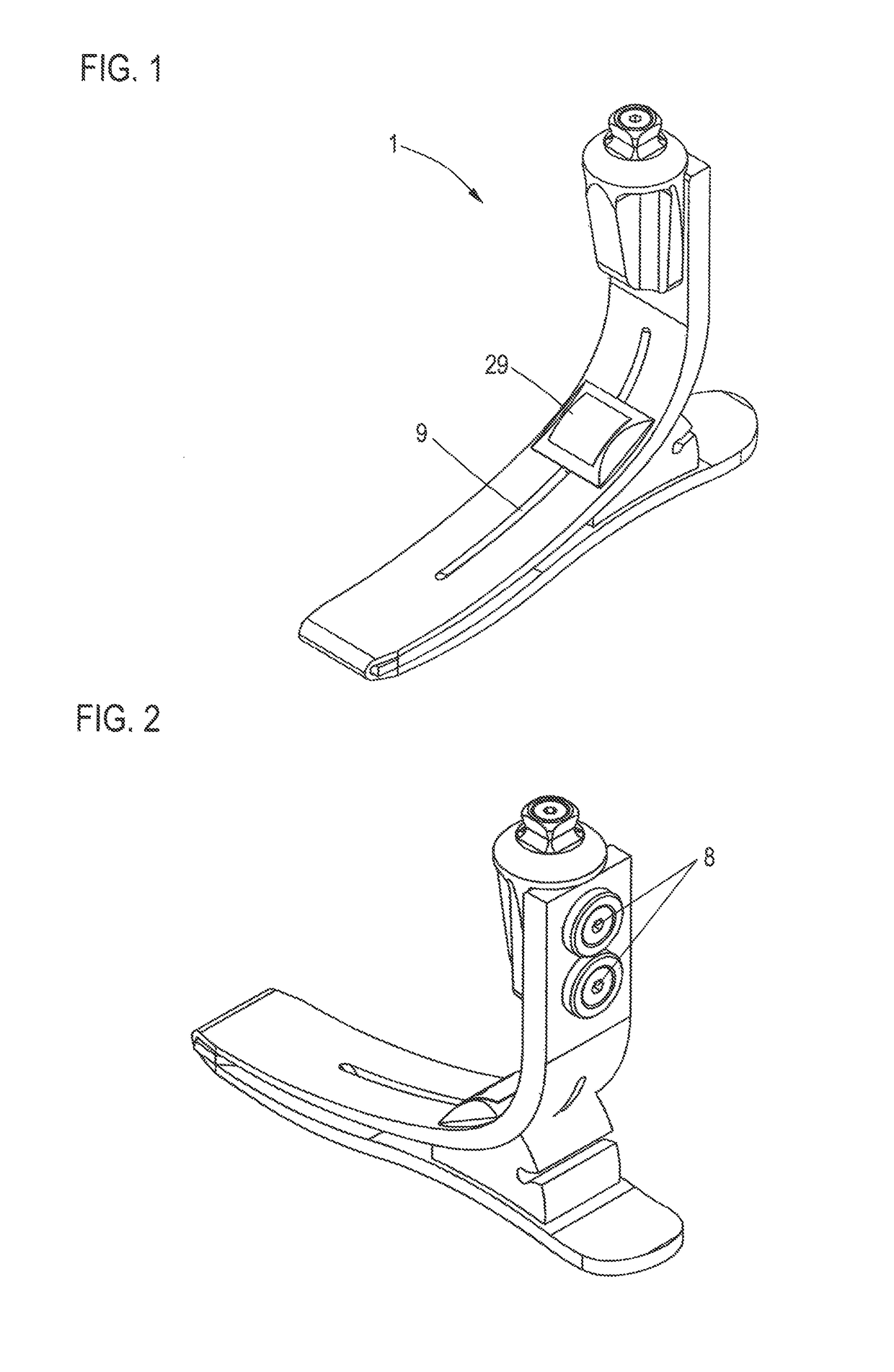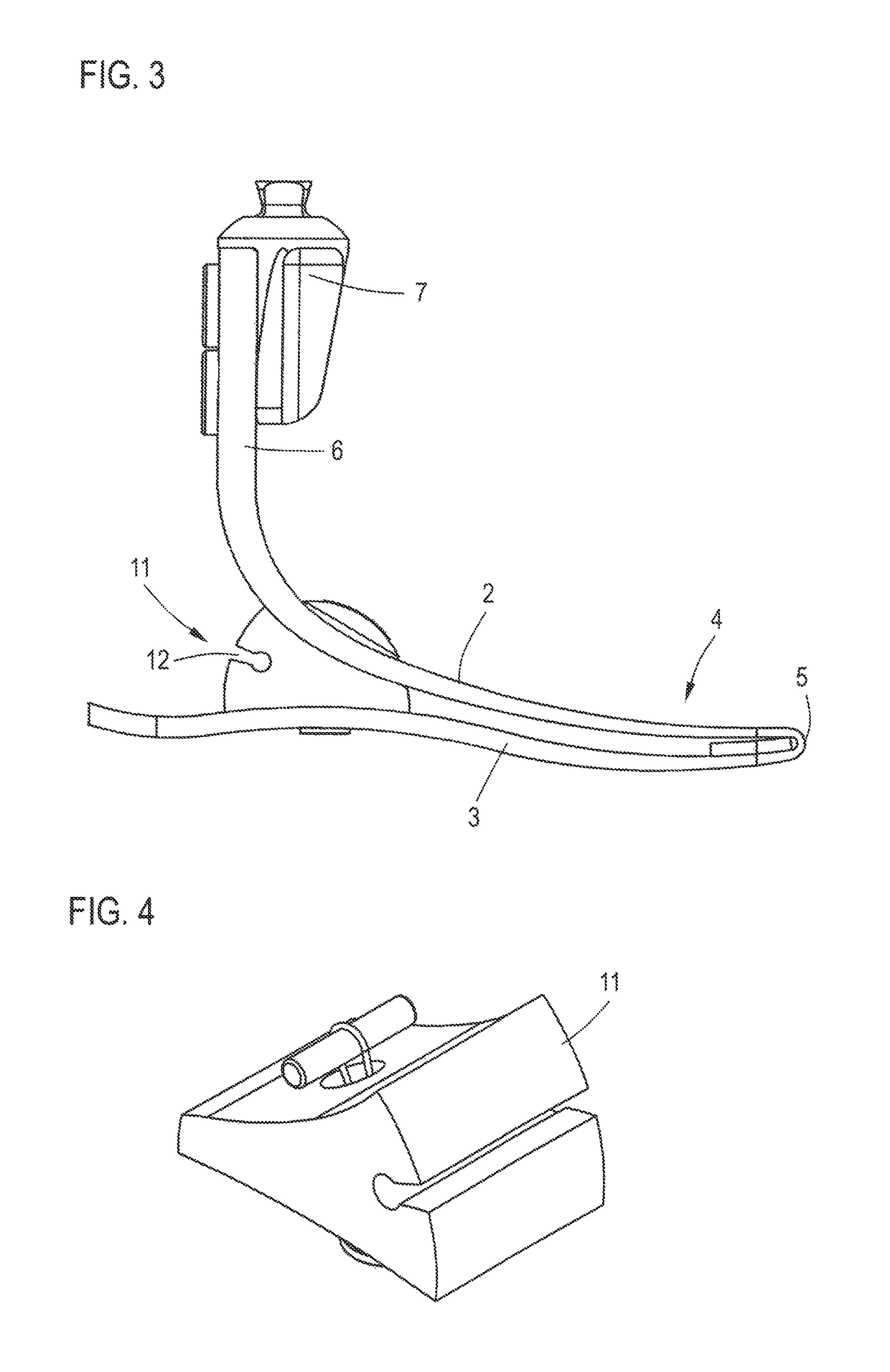Foot prosthesis
a foot and prosthesis technology, applied in the field of foot prosthesis, can solve the problems of limited connection means and outward deflection of damping elements, and achieve the effects of simple stamping operation, easy manufacturing, and easy formation
- Summary
- Abstract
- Description
- Claims
- Application Information
AI Technical Summary
Benefits of technology
Problems solved by technology
Method used
Image
Examples
Embodiment Construction
[0040]FIG. 1 shows a foot prosthesis 1 according to the invention, consisting of an upper part 2 and a lower part 3; see also FIGS. 2 and 3. The upper part 2 and the lower part 3 are realized by a one-piece component 4, wherein the upper part 2 and the lower part 3 are connected to each other in the area of the tip of the foot by a foldover 5. In this exemplary embodiment, the upper part 2 ends in a vertical section 6, on which a fastening means 7 is arranged for the connection of, for example, a prosthesis shaft by means of suitable mounting screws 8.
[0041]The component 4 is a one-piece component, preferably made of a carbon fiber composite material. This means that the upper part 2 and the lower part 3 can be formed in a single production step. As can be seen, the upper part 2 and the lower part 3, when seen from above, are congruent with each other, i.e., their outlines coincide.
[0042]An elongated slot 9 is provided in the upper part 2; this slot will be discussed again below. An...
PUM
 Login to View More
Login to View More Abstract
Description
Claims
Application Information
 Login to View More
Login to View More - R&D
- Intellectual Property
- Life Sciences
- Materials
- Tech Scout
- Unparalleled Data Quality
- Higher Quality Content
- 60% Fewer Hallucinations
Browse by: Latest US Patents, China's latest patents, Technical Efficacy Thesaurus, Application Domain, Technology Topic, Popular Technical Reports.
© 2025 PatSnap. All rights reserved.Legal|Privacy policy|Modern Slavery Act Transparency Statement|Sitemap|About US| Contact US: help@patsnap.com



